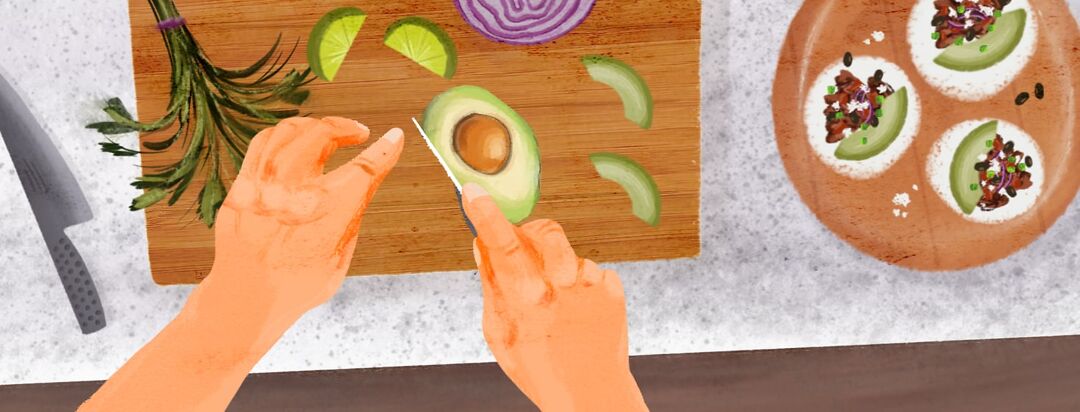How Can Cutting Boards and Bamboo Lids Affect Asthma?
Mold is organic and can grow just about everywhere. It loves to hide in your kitchen. It’s tricky because, unlike most asthma triggers, mold is both an allergen and an irritant. Mold exposure symptoms can include a runny/stuffy nose, watery eyes, sore throat, cough, headache, and rash.1
As a former professional chef, I still love to cook, host dinner parties, and hang out in my kitchen. But I am always on the search for triggers in my home. Here are 2 places mold may be hiding in your kitchen and how to stop it.
Wood cutting boards
Wood cutting boards are the best to use if you want to protect your knives. However, they can grow mold easily. Mold is usually black on a cutting board, but it can also be green or brown. If you have chips or slices on your board, mold can grow in them easily. Throw away any board that already has mold, deep grooves, or chips from knives.
How to clean and sanitize your wood cutting board
- Wash your board immediately after use with warm water and a mild detergent. Wooden boards will warp and crack in the dishwasher.
- Sanitize your board with white vinegar (if the smell of vinegar doesn’t trigger your asthma).
- Put coarse salt on your board to sanitize and remove stains and smells. Cut a lemon in half and then use the flesh side to rub in the salt and scrub the cutting board.
- Dry the board with a clean towel, and let it air dry on a drying rack.
Rub the board with olive oil or an oil made especially for cutting boards when the board is dry. This will help seal the board, keeping bacteria and mold from growing.
Are plastic or composite boards better for people with asthma?
Plastic cutting boards can dull knives quickly and harbor mold in a knick or slice caused by use. You can clean and sanitize plastic boards the same way as wood boards. Composite boards can often be put in the dishwasher or cleaned by hand. Throw out any boards with mold, stains, or smells you can’t remove.
Bamboo lids on glasses
Okay, I admit I’ve been influenced by social media and purchased those trendy drinking glasses with bamboo lids and glass straws. But I have found that if you do not remove and dry the lid immediately after using, moisture builds in the glass and on the lid, creating the perfect environment for mold. After leaving the glasses in my sink with the lids on overnight after a dinner party, all the lids had black mold spots.
Cleaning the lids and silicone seal
- Remove the lid from the glass, and remove the silicone ring. Clean the lid and ring with warm water and mild dish detergent.
- Use a dish brush or scouring pad to remove any mold or mildew spots.
- Soak the lids in a baking soda and white vinegar solution (if vinegar doesn’t trigger your asthma) to sanitize them.
- Remove the excess water with a dry towel, and place them on a drying rack to completely air dry.
Removing the mold from these lids is difficult. You can try boiling them (without the silicone ring). Throw out any lids with remaining mold.
If the bamboo looks dry, use mineral or cutting board oil to revive them. Store them in a dry place.
Cleaning the glass straws
The straws also need to be cleaned to avoid mold and bacteria. A brush designed to clean straws is usually included in the glass packaging.
- With mild soap and warm water, scrub the inside of the straws with the brush. Clean the outside as well.
- Give the straws a shake to remove the excess water, dry the outsides with a towel, and place them on a drying rack to completely dry.
Storing wet items can create asthma triggers
Ensure that your cutting boards, glasses, lids, straws, and other kitchen items are thoroughly dry before storing them in cabinets and drawers. If plates or pots are too wet, the shelves and drawers can get moldy.
Also, water droplets left on dishes or silverware can attract roaches, which need just a tiny amount of water to survive. Along with mold, roaches can be an asthma trigger.2
Do you use wooden cutting boards or glasses with bamboo lids? How do you clean and store them to avoid mold? Share in the comments.

Join the conversation